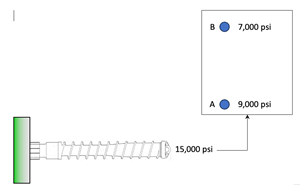Dryers Use Less Energy to Dry PET
Novatec Inc., Baltimore (novatec.com), is introducing two patented dryer control technologies intended to cut energy costs for processors of PET.
Novatec Inc., Baltimore (novatec.com), is introducing two patented dryer control technologies intended to cut energy costs for processors of PET. Approximately 60% to 65% of the energy required to dry PET is used to raise the temperature of the resin and boil off the moisture, explains Mark Haynie, Novatec’s dryer sales product manager. About 30% to 35% of the power is used in regeneration of the desiccant, and only 5% to 10% is for operation of the blowers and control power. Novatec’s dryer energy management system, dubbed IntelliPET, regulates all of these functions automatically. The two technologies are standard on all of Novatec’s IntelliPET PowerGuard models, which are modified versions of the company’s NovaWheel desiccant-wheel dryers.
ADAPTIVE CONTROL OF HEATING
“If the air-flow rate and temperature rise are minimized, the process heating energy can be reduced to little more than what’s necessary to heat the resin,” Haynie states. “One technology, which we call adaptive control, minimizes the air required so that the minimum energy is used for process heating. This means the temperature of the resin is raised to the appropriate temperature for drying, but all of the energy remains in the resin, in the drying hopper, and a minimum of the generated heat is returned to the dryer.”
The system achieves this by measuring the temperatures of the incoming resin and of the return air leaving the drying hopper, and adjusting the air flow on the fly so that the return-air temperature (returning to the dryer from the drying hopper) is only slightly higher than the temperature of the resin entering the drying hopper. This is controlled by varying the speed of the blower with a variable-frequency drive (VFD) that changes the air-flow rate. By minimizing the air flow while maintaining the temperature of the resin, the process heat is maintained at the lowest possible level.
The temperature of the return air from the hopper typically rises if the material throughput rate is less than the design rate for the dryer, or if the resin moisture is lowered or the resin inlet temperature increases, Haynie explains. By measuring the return-air temperature and holding it at the incoming resin temperature, adaptive control ensures that the energy used can raise the resin temperature to the appropriate level for processing, vaporize all moisture retained in the resin and adjust for variations in resin temperature, he adds.
Haynie says recent tests revealed that IntelliPET can cut power costs up to 30% vs. conventional technologies; savings can exceed 50% when IntelliPET is teamed with a high-efficiency gas heater.
REGENERATION OPTIMIZATION
Novatec refers to its second approach to reduce dryer energy consumption as regeneration optimization. The idea here, Haynie says, is to minimize the power used in regenerating the desiccant, which can account for as much as 35% of a PET dryer’s total power usage. The system has two parts: First, the rotational speed of the desiccant wheel is minimized, reducing the amount desiccant media to be heated on a lb/min basis. Wheel speed is controlled by a VFD to no more than is required to adsorb the moisture from the return air. By controlling the wheel speed, the desiccant media is loaded to its maximum while maintaining a consistent dewpoint below -40 F.
The second part of the feature involves the use of a VFD on the regeneration air blower. The VFD minimizes the air flow to the point where water is desorbed from the desiccant, but only minimal heat leaves the wheel during the regeneration process. As the ambient air is heated and passes through the wheel, the discharge temperature is constantly monitored and the VFD adjusts the air flow to ensure that minimal air flow is used to remove all of the moisture gained in drying but no excess air is used or heat removed.
“The temperature of the air exiting the top of the wheel is just enough to remove the moisture and carry it away but is kept to a constant temperature,” says Haynie. “This ensures that the wheel will remove all of the moisture from the resin regardless of its moisture level and will automatically adjust as the moisture changes due to seasonal variations or changes in virgin/flake ratios.” Haynie says the technology cuts regeneration energy by as much as 30%.
Related Content
Understanding the Effect of Pressure Losses on Injection Molded Parts
The compressibility of plastics as a class of materials means the pressure punched into the machine control and the pressure the melt experiences at the end of fill within the mold will be very different. What does this difference mean for process consistency and part quality?
Read MoreUsing Data to Pinpoint Cosmetic Defect Causes in Injection Molded Parts
Taking a step back and identifying the root cause of a cosmetic flaw can help molders focus on what corrective actions need to be taken.
Read MoreProcess Monitoring or Production Monitoring—Why Not Both?
Molders looking to both monitor an injection molding process effectively and manage production can definitely do both with tools available today, but the question is how best to tackle these twin challenges.
Read MoreThree Key Decisions for an Optimal Ejection System
When determining the best ejection option for a tool, molders must consider the ejector’s surface area, location and style.
Read MoreRead Next
Beyond Prototypes: 8 Ways the Plastics Industry Is Using 3D Printing
Plastics processors are finding applications for 3D printing around the plant and across the supply chain. Here are 8 examples to look for at NPE2024.
Read MoreSee Recyclers Close the Loop on Trade Show Production Scrap at NPE2024
A collaboration between show organizer PLASTICS, recycler CPR and size reduction experts WEIMA and Conair recovered and recycled all production scrap at NPE2024.
Read More













